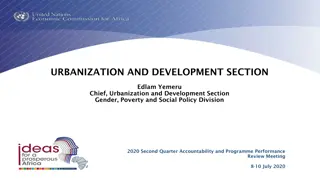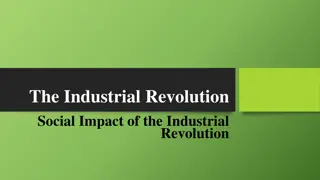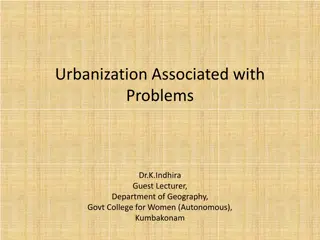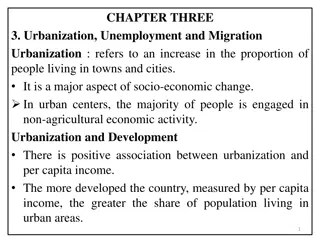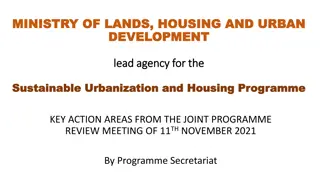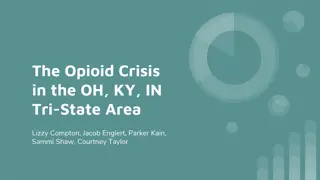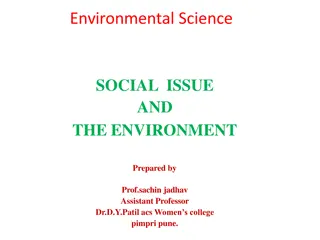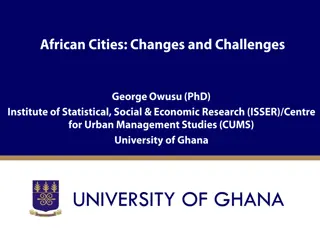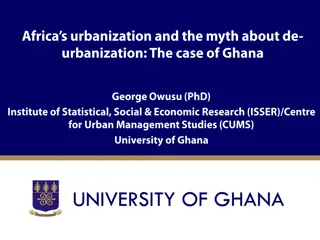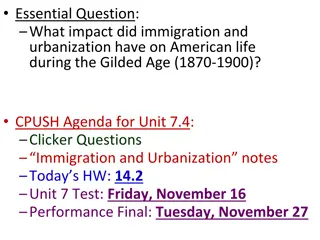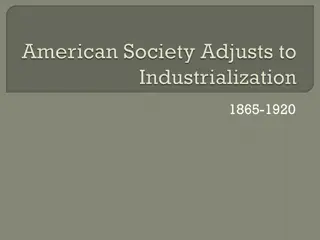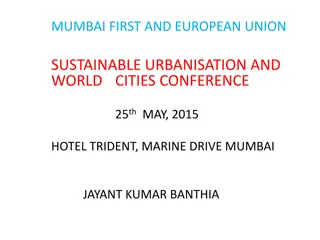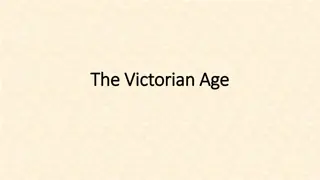Understanding the Concept and Impact of Urbanization
Urbanization is the progressive concentration of population in urban areas, resulting in changes in demographics, sociological dynamics, and the quality of life. It involves the movement of people from rural to urban regions, leading to challenges such as housing, slums, crowding, sanitation, pollution, and inadequate social infrastructure. Urbanization is driven by factors like migration, industrial growth, government apathy, defective town planning, and vested interests, affecting the urban-rural balance and societal dynamics.
Uploaded on Oct 02, 2024 | 0 Views
Download Presentation

Please find below an Image/Link to download the presentation.
The content on the website is provided AS IS for your information and personal use only. It may not be sold, licensed, or shared on other websites without obtaining consent from the author. Download presentation by click this link. If you encounter any issues during the download, it is possible that the publisher has removed the file from their server.
E N D
Presentation Transcript
Understanding Concept : Urban Demographical ly Sociologically Heterogeneit y Impersonalit y Size of population Density of population Interdependenc e Quality of life Nature of the work of member
It is progressive concentration of population in urban unit. Kingsley Davis has explained urbanization as process of switch from spread out pattern of human settlements to one of concentration in urban centers Urbanisation is the movement of population from rural to urban areas and the resulting increasing proportion of a population that resides in urban rather than rural places
According to Anderson, urbanisation is not a one way process but it is a two way process. It involves not only movement from villages to cities and change from agricultural occupation to business, trade, service and profession, but it also involves change in the migrants attitude, beliefs, values and behaviour pattern.
Degree/Index of Urbanisation Census Year Urban Population (Percent) Rural population (Percent) 1901 10.84 89.15 1911 10.29 89.71 1921 11.18 88.82 1931 11.99 88.01 1941 13.86 86.14 1951 17.29 82.71 1961 17.97 82.03 1971 18.24 81.76 1981 23.33 76.66 1991 25.72 74.28 2001 27.78 72.22 Source : IND_CEN01, Census 2001, Office of the Registrar General
Basic feature of urbanization Lopsided urbanization induces growth of class I cities Urbanisation is mainly a product of demographic explosion and poverty leads rural - urban migration. Rapid urbanization leads to massive growth of slum followed by misery, poverty, unemployment, exploitation, inequalities, degradation in the quality of urban life. Urbanisation occurs not due to urban pull but due to rural push.
Problems of Urbanisation Housing and Slums Crowding and Depersonalisation Water Supply and Drainage Transportation and Traffic Power Shortage Sanitation Pollution inadequate provision for social infrastructure ( school, hospital, etc ).
Causes of Urbanisation Migration from Rural to Urban areas Industrial Growth Apathy of the Government Defective Town Planning Vested- interest Forces
Measures need to be taken Proper urban planning Development of strong economic base for urban economy Integration of rural and urban economy-- emphasis on agro-based industry. Raw material should be processed in rural economy and then transferred to urban economy. Urban planning and housing for slum people with human face.







